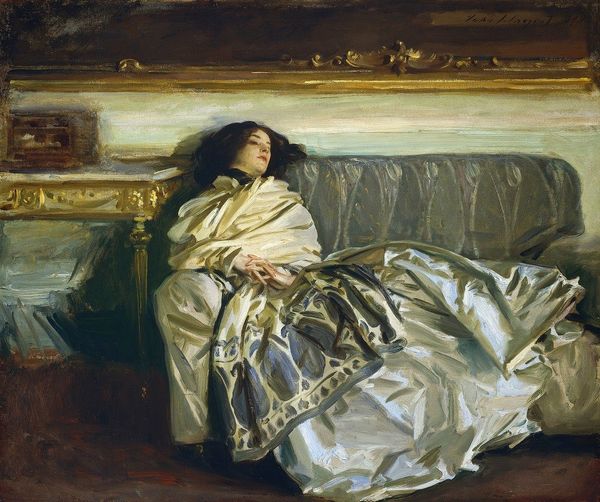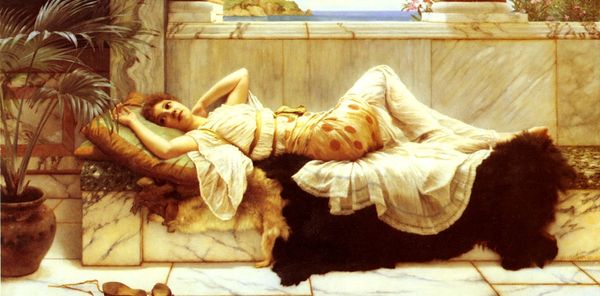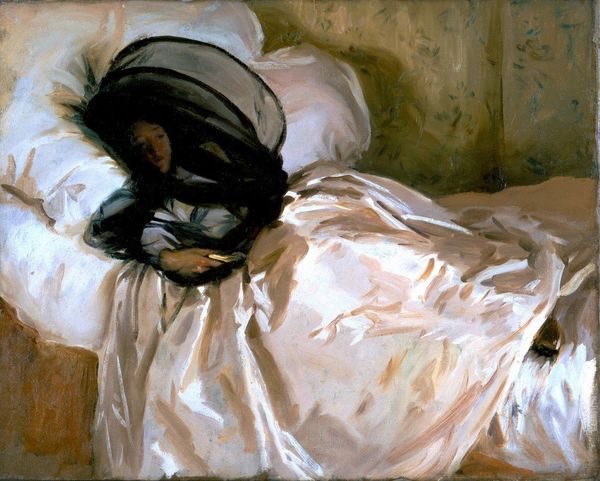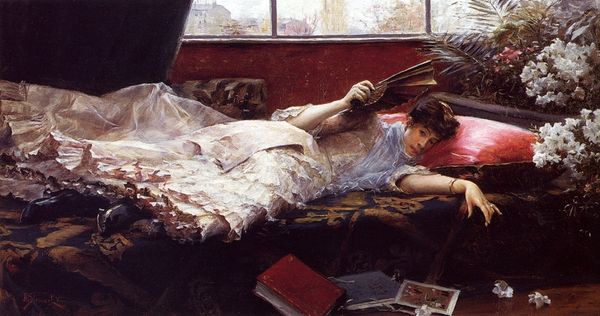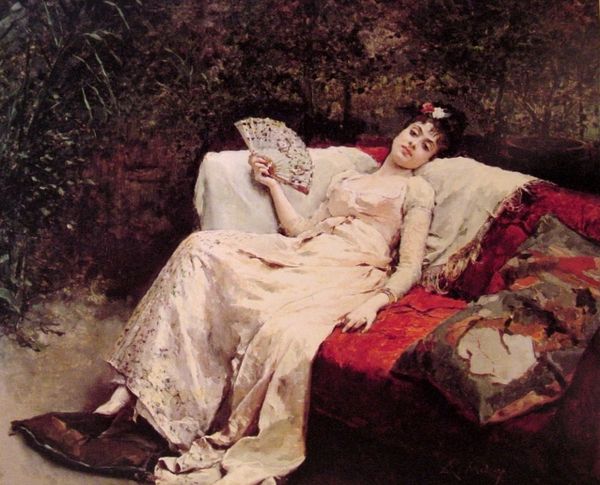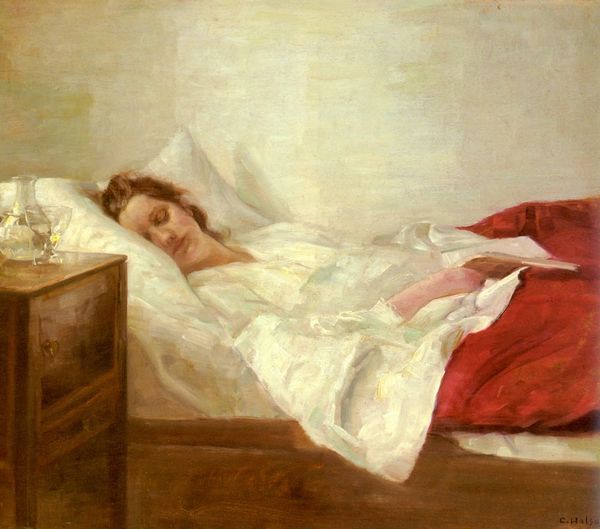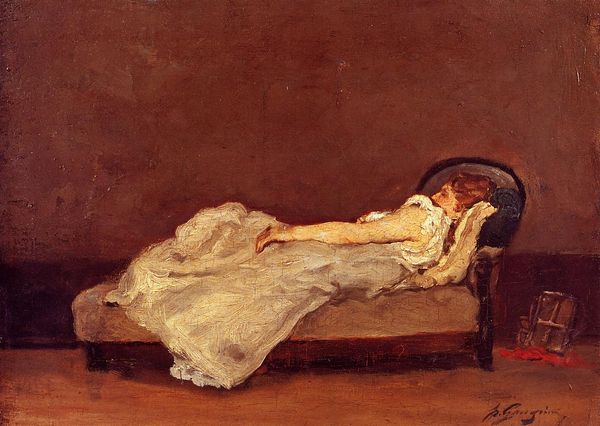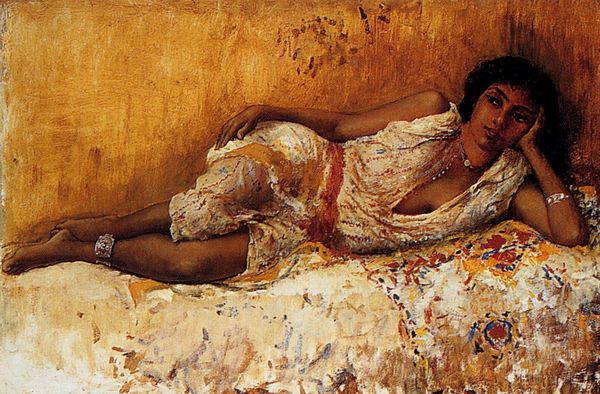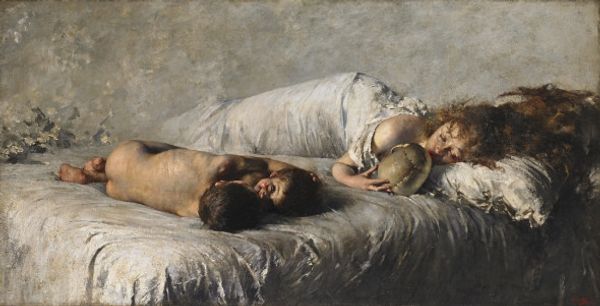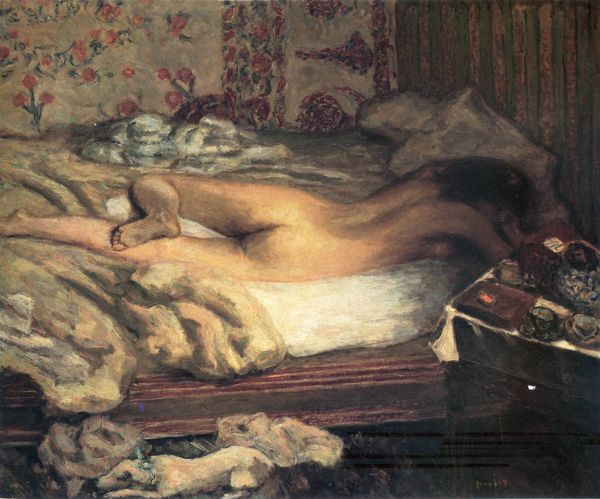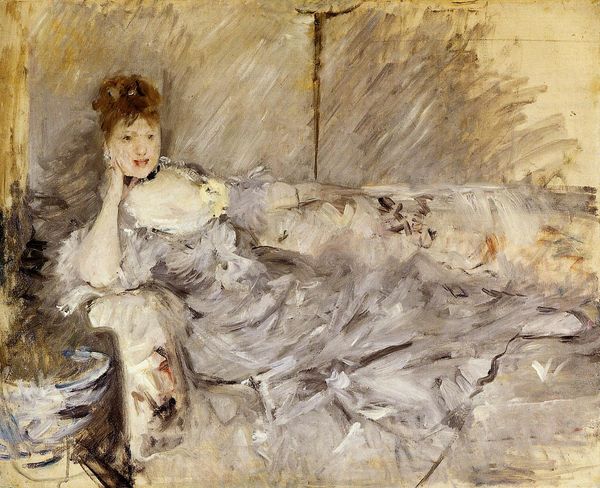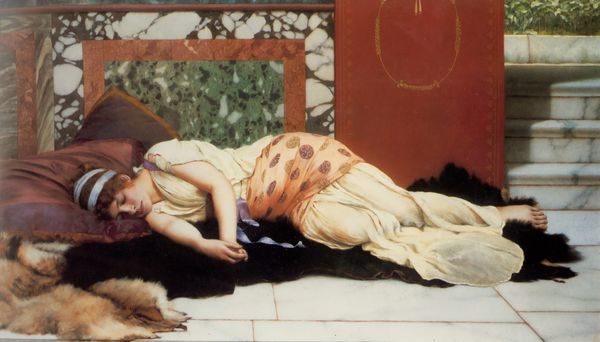
Dimensions: 38.74 x 66.04 cm
Copyright: Public domain
Curator: This is Julius Leblanc Stewart’s “Reclining Woman,” painted in 1882. Editor: A first impression? An elegant lethargy. The textures are palpable—the sheen of silk, the plush of the divan—all conveying a very specific mood. Curator: Precisely. Observe how the light orchestrates the composition. It delicately drapes the subject, accentuating the curvilinear form of the chaise lounge, and contrasts sharply with the somber backdrop. This deliberate chiaroscuro heightens the dramatic tension. The scattered letters are quite prominent as well. Editor: The making of this painting must have been very deliberate. Note how the artist utilizes impasto to depict the materiality of her satin dress, creating tangible volume. Oil paints allowed Stewart to render light and shadow so effectively. It evokes questions about access, labour, and a degree of luxury. These considerations are very important when understanding how artistic styles evolve. Curator: I agree, yet let’s not overlook the significance of line. The diagonal sweep of the woman's body intersects with the verticality of the wall, generating a spatial dynamic that subtly suggests confinement. A similar approach can be found within academic artworks which were extremely concerned with pictorial organizations, and it makes this painting so interesting! Editor: Perhaps this "confinement" isn't simply spatial but social? The artwork prompts an analysis of the gilded age in the US. And thinking about women’s confinement, this all must lead us to deeper reflection on societal pressures. How much labor was involved in her day-to-day, and in producing such clothes, couch, and the paint, the brushes? What kinds of exploitation were involved? Curator: Certainly. Yet, I can also analyze the formal aspects. For instance, the color palette, primarily subdued golds and pinks, contributes to a sense of decadent melancholy. It's through this convergence of elements that we apprehend the artwork's emotional register. The artist is attempting to portray this feeling using artistic means. Editor: Yes, I agree to the value in these methods, yet it's crucial we account for these power structures if we wish to decode visual representation and fully grapple with its meaning. Curator: Absolutely, a potent reminder of the complex relationship between artistic interpretation and societal structure. Editor: I think this kind of artwork could become an engaging historical document for material historians and craft historians interested in interrogating the socio-economic factors inherent within fine art production of the period.
Comments
No comments
Be the first to comment and join the conversation on the ultimate creative platform.
